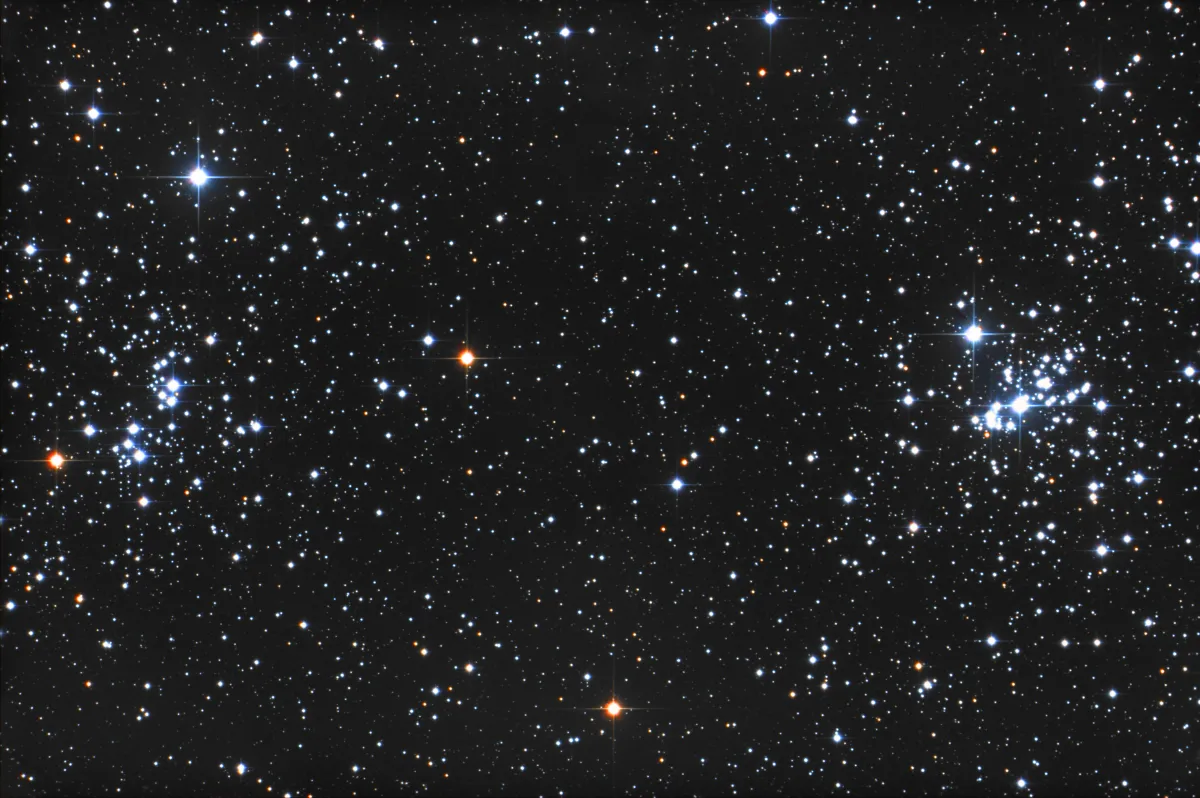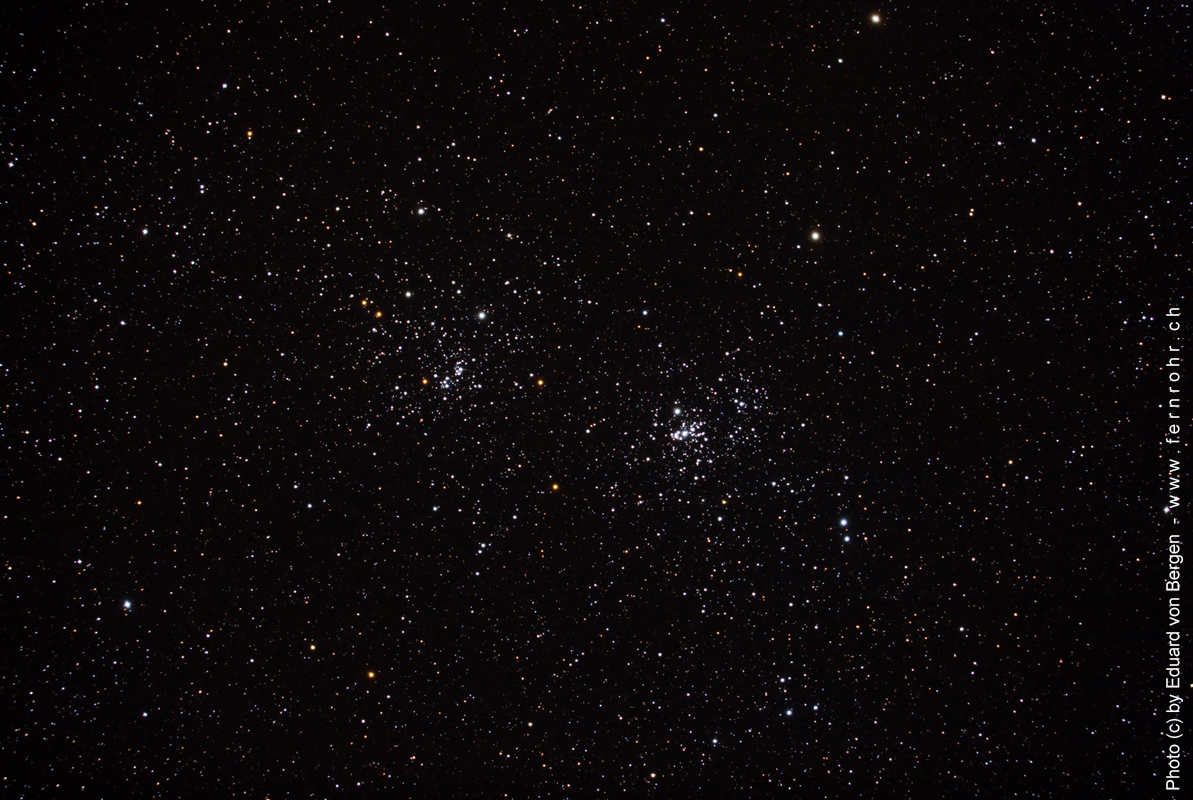h+χ Persei, Double Cluster (NGC 869/884)


History
The earliest known record of this double star cluster dates back to 150 BC. Hipparchus and Ptolemy mentioned them as nebula or «cloudy patch», one of the half a dozen known at the time. The true nature of such spots remained a mystery until the invention of the telescope. It is also a mystery why Charles Messier did not include this object in his catalog, although it was known in his time and his catalog also includes other bright star clusters such as Praesepe (M 44) or the Pleiades (M 45). [4]
The names of these two star clusters have evolved over the past few hundred years. Tycho Brahe measured a single position for this «nebulous star» and Johann Bayer described it as «χ (chi) Persei». The designation «h Persei» was probably later assigned to a weak star in the neighborhood. Since around the 1840s it was customary to designate the lighter western cluster (NGC 869) as «χ» and the weaker eastern cluster (NGC 884) as «h». [196] A nickname that has appeared in the Swiss astro scene is «Hatschi Cluster» based on «h + χ Persei». In the English-speaking world one often only finds «double clusters».
Physical Properties
The distance from NGC 869 is 2079 pc (6781 light years) and that of NGC 884 is 2345 pc (7648 light years). Both clusters actually stand together and are only a few hundred light years apart. Presumably they come from the same star formation region. They are moving towards us at around 40 km/s to 60 km/s. [145]
The age of the two clusters is estimated to be around 10 to 14 million years. Each cluster contains over 300 blue-white supergiants (very hot and bright stars of the upper main sequence), which radiate strongly in the UV and X-ray range as well as in visible light. The weaker ones are much more numerous. Each cluster certainly has a total of a few thousand to a few tens of thousands of stars. Although these hot stars are a few hundred times younger than our sun, they are near the end of their lives. The largest have already evolved into red giants, the last stage of their stellar life. These are more noticeable in the more easterly cluster NGC 884, as shown in Fig. 1.
| Name | RA | Dec | Type | vMag | Dim | MD | Dreyer Description | Identification, Remarks |
|---|---|---|---|---|---|---|---|---|
| NGC 869 | 02 19 04.0 | +57 08 06 | OCL (I3r) | 5.3 | 18 | 2.079 | ! Cl, vvL, vRi, st 7…14 | WH VI 33; h 207; GC 512; OCL 350; Chi Per; Double cluster |
| NGC 884 | 02 22 05.0 | +57 07 48 | OCL (I3r) | 6.1 | 18 | 2.345 | ! Cl, vL, vRi, ruby * M | WH VI 34; h 212; GC 521; OCL 353; Chi Per; Double cluster |
Finder Chart
The double star cluster h + χ Persei lies in the area of the constellation Perseus between its figure and the «W» of the constellation Cassiopeia. It is visible to the naked eye and therefore easy to find. On 31 October it is in opposition to the Sun and crosses the meridian at local midnight. It can best be observed in the months of July to March.
Visual Observation
300 mm Aperture: This beautiful double star cluster is one of my favourite objects in the short focal length 300 mm f/4 Newtons. With the 21 mm Tele Vue Ethos you have 1.75° field of view and both clusters fit easily into the field of view. If the telescope has not yet cooled down or the air is generally restless, the many bright stars here sparkle particularly beautifully. If you come back later, when the telescope has acclimatized and the air is calm, the many stars look like pinpricks. Most of them are bluish-white, but here and there a red star is hidden under them. No photo pays tribute to a live view here! — 300mm f/4 Popp Newton, Bernd Nies
400 mm Aperture: In the 21 mm Tele Vue Ethos (85x, 1.17°) and also in the 31 mm Tele Vue Nagler (58x, 1.4°) of a fellow astronomer, the double cluster is a dream to behold: The two clusters fill the entire field of view with needle-sharp little stars. Particularly attractive are a row of red stars in each cluster, which form a beautiful contrast to the mainly bluish-white stars. — 400 mm f/4.5 Taurus Dobsonian, Gurnigel, 19. 8. 2023, Bernd Nies
